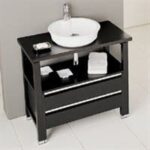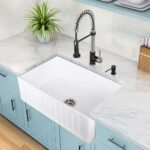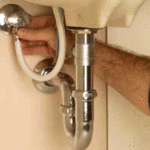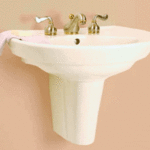The choices in materials and dimensions of kitchen sinks can be daunting, so shop carefully.
When buying a new kitchen sink, you’ll find that there is a sink for every need and every budget—and the variety of options may overwhelm you. You’ll need to decide upon the sink’s material, the size and configuration of its bowl or bowls, the method for mounting it to the countertop, and more.
Kitchen Sink Sizes
Start by figuring the size for your new sink. If you’re replacing an existing sink, your new sink’s size has already been determined unless you plan to change the counter as well. If you’re building a new kitchen or remodeling you’ll need to shop enough to determine whether the material and mounting method you want is available in the size you need.
A kitchen sink has three primary dimensions: front to back, side to side, and depth.
Front-to-back dimensions are available in 1-inch increments from 11 inches to 24 inches and also in 26-, 28- and 32-inch dimensions.
Typical side-to-side widths are sold in 1-inch increments from 11 to 40 inches and also in 42-, 44-, and 45-inch widths.
Many different depths are available; these are less standardized from one manufacturer to another.
Kitchen Sink Mounting Methods
Consider how the sink will be installed and seated in the countertop. A self-rimming top-mount sink has a molded edge that overhangs the countertop and rests on top of it; this is the easiest installation, but crumbs can collect where the sink meets the countertop.
A rimless or undermount sink attaches or is fused to the underside of the counter; though the installation is more difficult, this setup is significantly easier to keep clean. The edge of the cut-out hole in the countertop must be finished well because it is highly visible.
Flush sinks are supported by metal strips around the perimeter or are an integral part of the countertop material.
Faucet-Mounting Holes
In addition to choosing a bowl configuration, check the mounting holes for fixtures. Most kitchen sinks have four holes for mounting faucets and accessories. In addition to the standard hole configuration, hole mounts may be available for a faucet sprayer, a hot water dispenser, the spout for a dedicated water filter, the air gap for a dishwasher drain, and a liquid soap dispenser.
If the sink you want doesn’t have enough holes for the devices you desire, look into special ordering one. (You can drill a hole in a stainless-steel sink using a special metal-cutting hole saw.) If you don’t need all the holes in the sink you wish to buy, ask about matching plugs for capping the unused holes.
Kitchen Sink Materials
Here’s a closer look at the most common kitchen sink materials, with the advantages and disadvantages of each.
Stainless Steel
They’re available in a wide range of prices, but you get what you pay for. A cheap sink is made of thin metal—you can feel it flex if you push on a bowl, or a garbage disposal may vibrate noisily; plus, it’s easily scratched, has a finish that is hard to keep clean, and it may make a drumming sound when you run water into it.
A higher quality sink is thick and firm (the thickness of stainless-steel sinks is measured by gauge; the lower the gauge, the thicker the material), and its finish will maintain its original appearance if you simply wipe it clean. 18-gauge or thicker is best.
Avoid a sink with a “mirror finish.” It looks great at first, but water spots will be a constant headache, and scratches will soon mar its appearance.
Check the insulation on the underside of the bowls, which is intended to deaden the sound of running water. Foam insulation works better than sprayed-on.
Enameled Cast Iron
These have a smooth, elegant finish unmatched by any other sink material, and they come in many colors. The finish is very hard and rarely chips. Running water will hardly be heard, and hot water will cool slowly. The easiest of all materials to clean, just a wipe will usually restore the original luster. However, because of the weight, stronger countertops are called for.
Avoid enameled-steel sinks, which resemble enameled cast iron but do not perform well.
Composite Acrylic & Fiberglass
These are not recommended because they soon lose their glossy finish and absorb stains readily. Newer composite sinks have a more durable finish.
“Quartz” sinks—composite sinks with a high quartz content—are especially durable and come in a variety of colors and configurations. They are an attractive, stylish alternative to more conventional materials, but even the best composite sink is susceptible to scratching.
Avoid using abrasive cleaners or allowing sand or dirt to get rubbed into the surface. Running water will make a drumming sound though not as loud as in a stainless-steel sink. Push down on a bowl to make sure the sink is firm; if it flexes, a garbage disposal may vibrate.
Integral Solid Surface
A solid-surface countertop can be ordered with a molded sink, either in the same color or a complementary hue. Because the color goes all the way through the material, this rimless, seamless sink can be scratched, but the scratches can be easily buffed out.
Vitreous China
Made of molded clay fired at a very high temperature, these sinks commonly have ornamental designs and come in unusual shapes. Most do not have mounting holes, so the faucet must be installed in the countertop. The finish is easy to clean and nearly impossible to scratch or stain. It can, however, chip, so beware of bumping it with pots or pans.
Brass & Copper
Sinks made of these materials are usually for bathroom use but may be appropriate as a secondary sink. They should be wiped dry after each use to prevent tarnishing.
Specialty Kitchen Sinks
When shopping for kitchen sinks, think outside the box. Possibilities worth considering for your kitchen include:
Decorative sinks. An extra-pretty sink can be pricey and may be difficult to keep clean; however, it just may add that special touch that transforms a plain kitchen into a conversation piece.
Antique sinks. An antique sink can lend a kitchen the pleasant ambiance of a farmhouse. Many older sinks are composed of one large, deep bowl with an attached drainer—an arrangement some people prefer—and tend to be quite sturdy.
Bar sinks. Positioned near the cooktop or next to a cutting board, a bar sink can be used for cleaning vegetables or for other food preparation. It is most useful if it is deep enough to accommodate large pots.



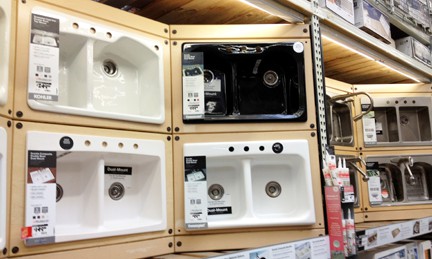
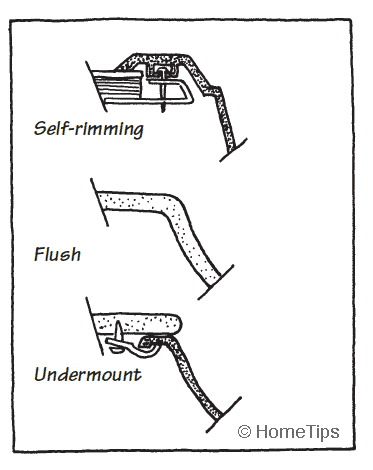
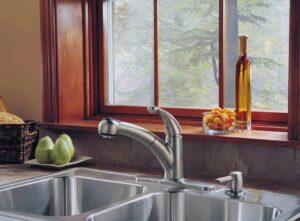

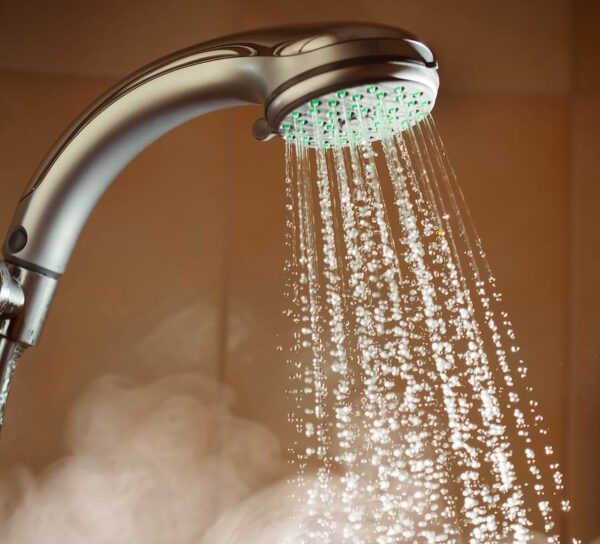
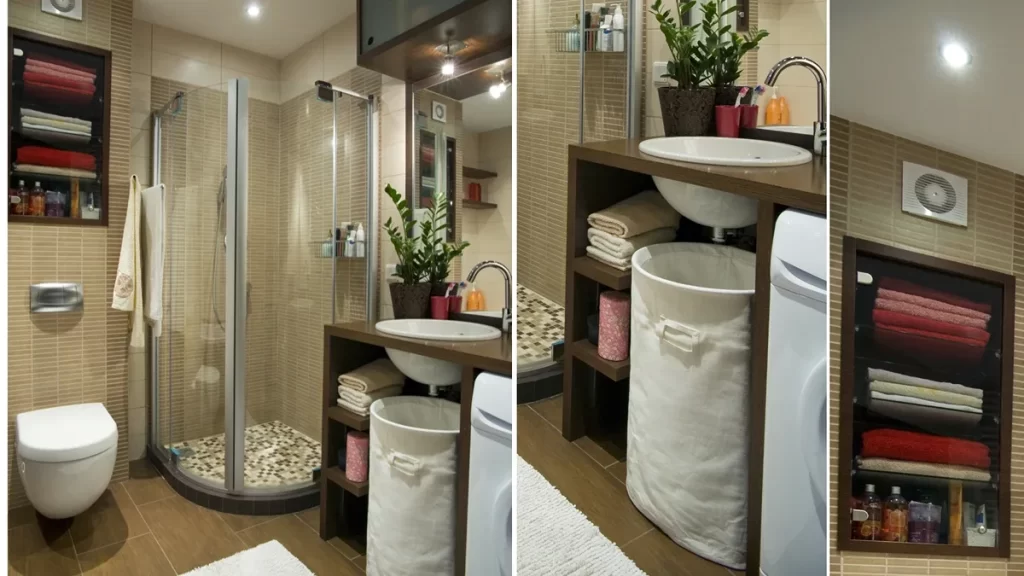

 Don Vandervort writes or edits every article at HomeTips. Don has:
Don Vandervort writes or edits every article at HomeTips. Don has:
